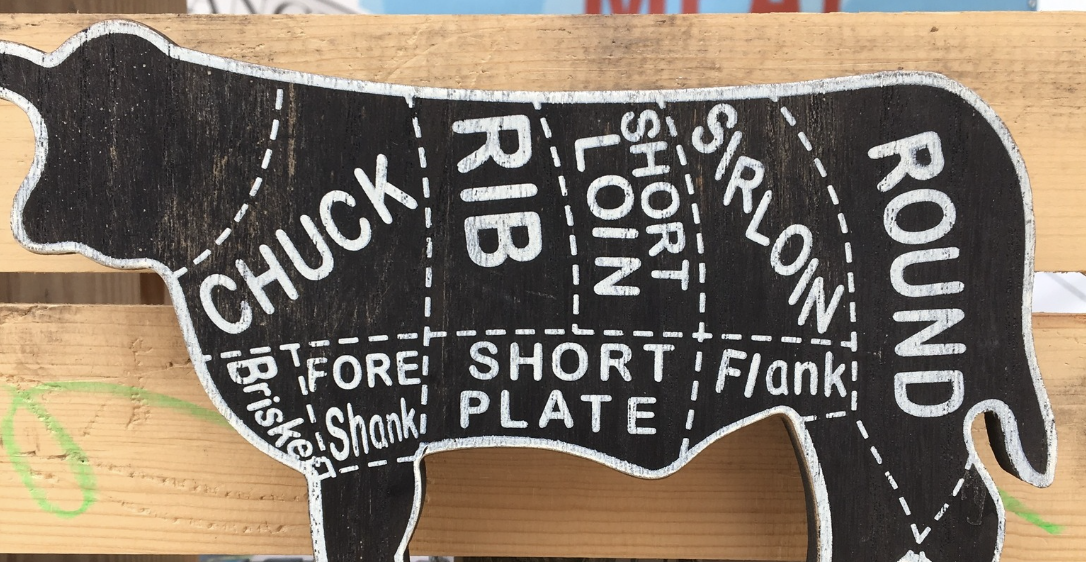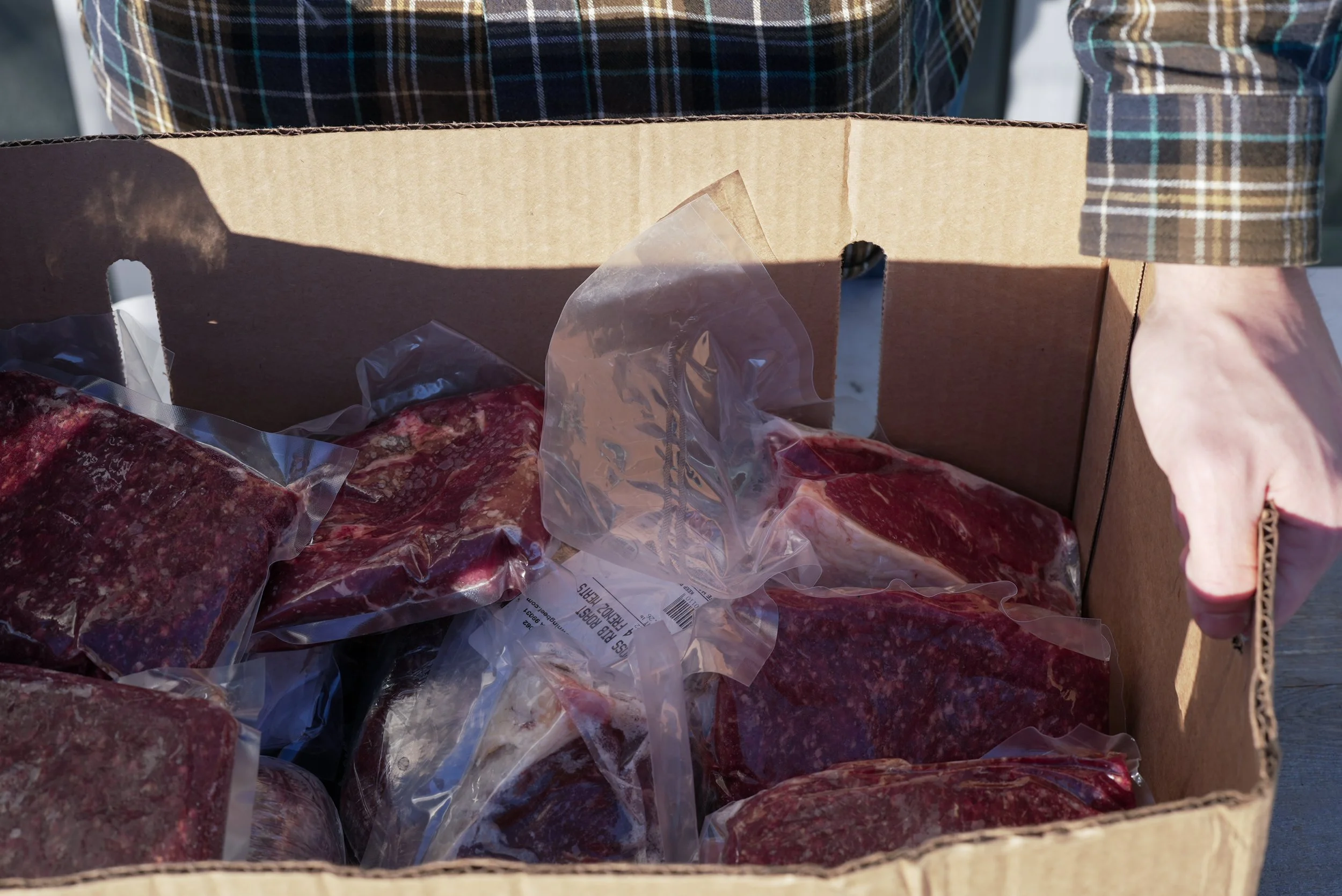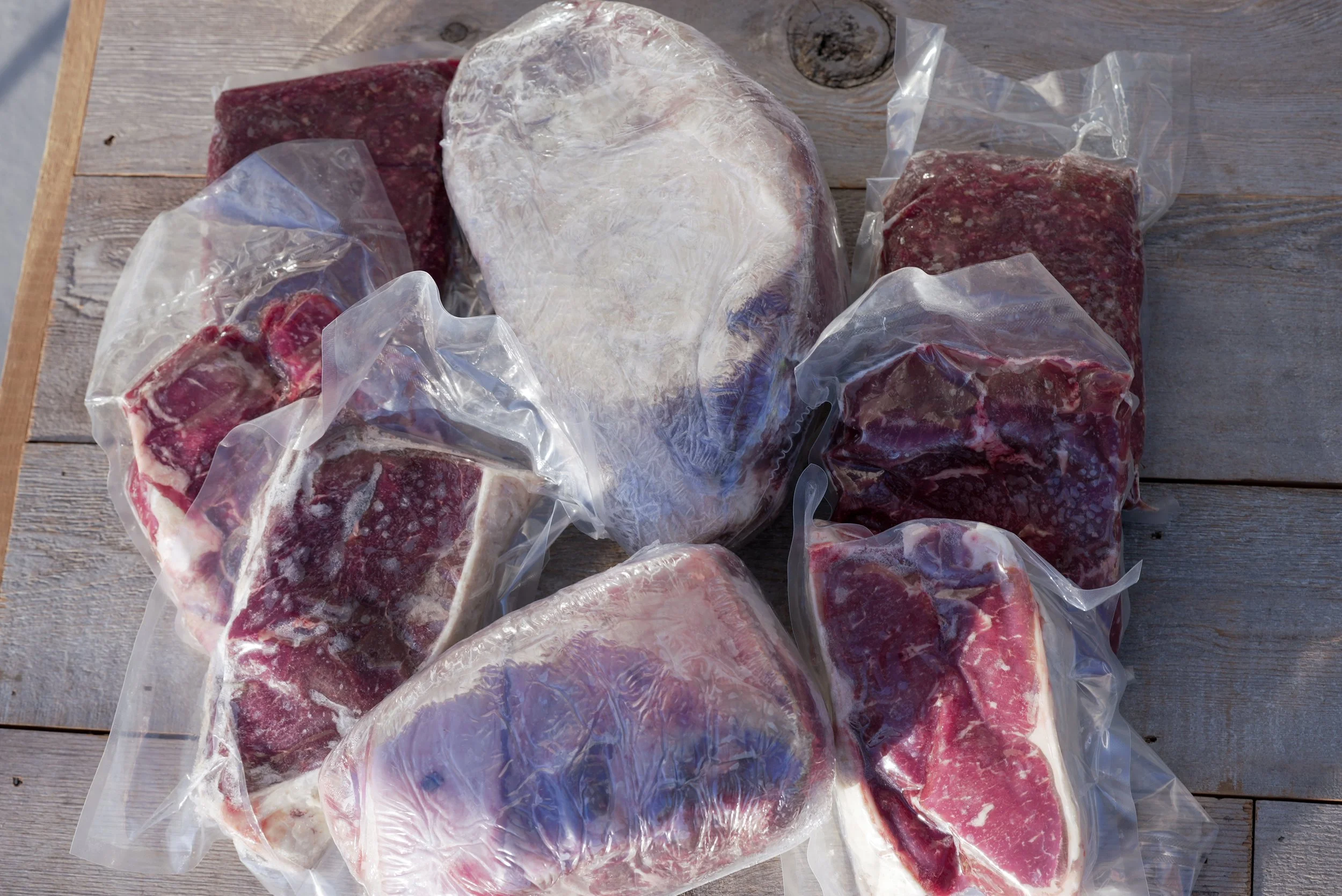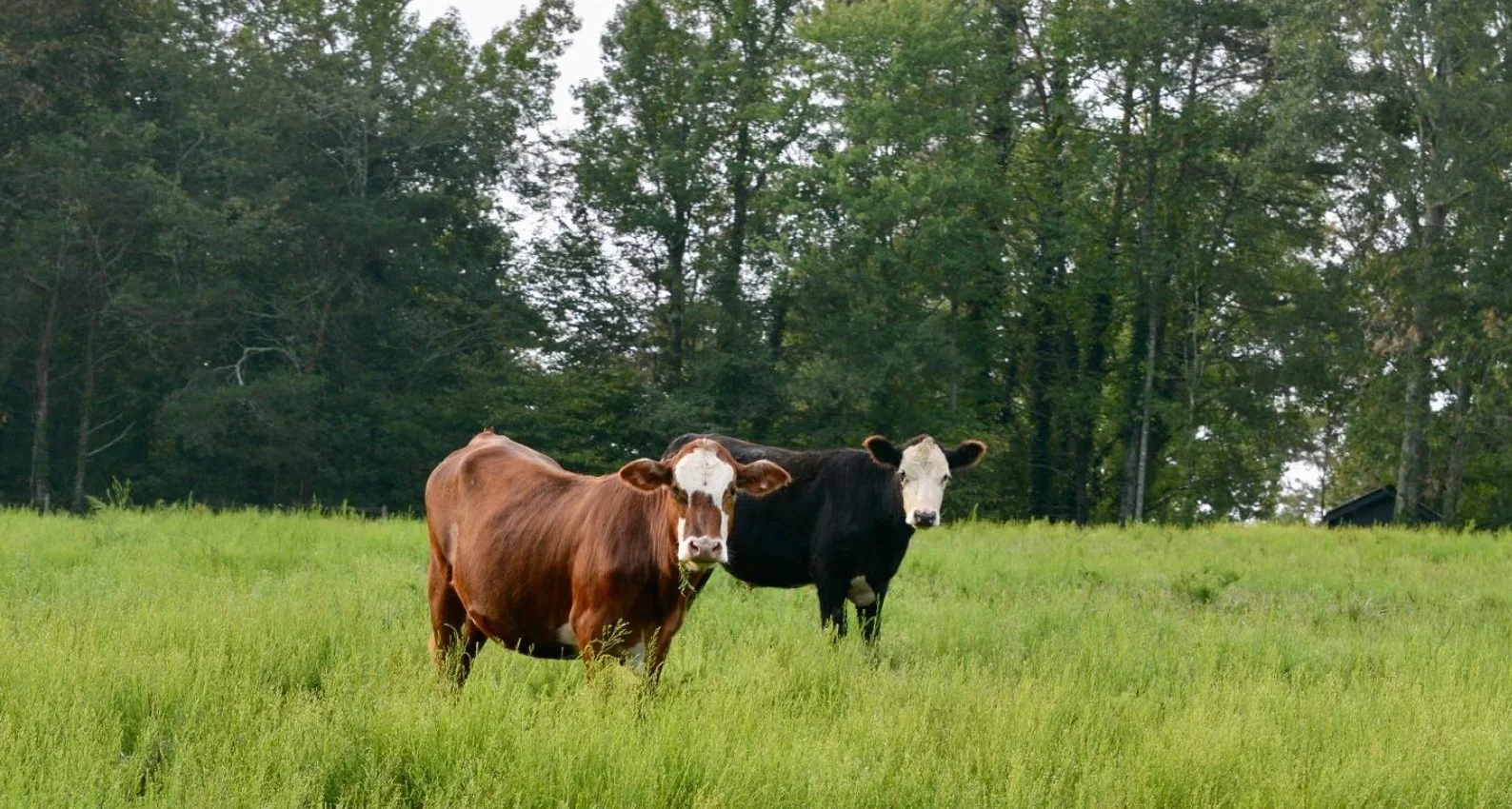Farm HERO: Selling Beef Byproducts
Overview
Some Farms choose to raise one product to ensure they are moving every part of an animal. One Farm in Washington focuses on their beef sales and believes if they do one thing, they can do it well. This requires mastering moving all parts of the cow. They cannot simply maintain a sustainable operation while only selling certain cuts. The Farm must move more niche cuts and byproducts to remain profitable while only raising cattle.
Having a local customer base that is loyal to your brand and wants to try your product range can help motivate a Farm. It is crucial to understand the best ways to package and market your more niche cuts and byproducts to ensure you can move the whole animal and not have product sitting in your store.
Attracting Buyers with Well-Known Beef Cuts
Starting in 2017, this Washington operation knew they wanted to focus on beef sales to their local community. They have 200 mama cows, and raise the animals from birth, on pasture for 100% of their lives. Selling direct allows them to move the whole animal, choosing how they wish to package and price their products to fit the needs of Buyers. Popular, well-known cuts can be easy sales, but they have also attracted their Buyers to purchase beef byproducts at a premium price, from wholesale for Chefs to retail Buyers.
Offering recognizable products will attract Buyers who may not be familiar with secondary cuts, bones or offal. Once you build a loyal customer base, they will be willing to try your other products, as they already trust your brand. For this Washington Farm, ground beef has been one of their most successful products. Offering a ground beef Subscription (5 lb and 10 lb box options) helps them ensure they will have a promised recurring revenue stream each month, and because the product is less intimidating to Buyers, they are more than willing to sign up.
Beef Bundles and Subscriptions
Their Rancher’s Choice Subscription includes ground beef, cuts and bones of the Farmer’s choosing for Buyers to try each month. This gives their customers the opportunity to try new beef products, and eliminates the stress of packing dozens of different orders each month. They move more product through Quarter, Half and Whole cow sales, as well as small and large sampler boxes (featuring a range of beef cuts to try before committing to a Subscription). This ensures Buyers can become comfortable with the product and trust in making a purchase with the Farm.
Selling Beef Byproducts from the Farm
Retail Buyers
This Washington Farm started small with selling byproducts to their community, then expanded as the demand grew. The Farmer started with basic cuts of steaks, roasts, burger and some bones, then began to offer organ meat and bundles (to move more product). They began to see that people would buy their organ meat at Farmers’ Markets, because if they knew they could expect it from their booth, customers would return each week to make a repeat purchase.
If you choose to sell more niche products, it is crucial that you seek out Buyers that you know will be attracted to those items. For example, a carnivore blend is typically popular with athletes or health-conscious Buyers. Consider setting up a pick-up location or handing out flyers outside of gyms and health/nutrition stores to attract new customers who are already familiar with the less popular blends.
Wholesale Buyers - Restaurants and Stores
The Farm formed relationships with local restaurants to push items that they needed to sell. They were able to reach out to restaurants and chefs and say, “I’m sitting on a pile of short ribs, can you run a special,” and they would do it. Chefs will typically be more well-versed on preparing these byproducts than the average Buyer, so these can be easier sales if you have built a loyal relationship (e.g. Beef Tongue for corned beef sandwiches). This can be a great marketing opportunity to attract new customers - wholesale or retail.
Pet stores will buy their tendons, knuckle bones and neck bones for dog treats. The Farm also began offering a Dog Bone Box with scrap bones (cut up for smaller dogs) for retail Buyers. Exploring various ways to push byproducts to a range of customers will help your Farm move more product. Byproduct sales help absorb the cost of processing, since those may typically be items that are thrown away at the butcher.
How to Market Beef Byproducts
Market your byproducts through email and on social media through sharing recipes and tips with Buyers (e.g. how to prepare a beef heart). This will make your customers more comfortable with the idea of trying new products from your Farm. This Washington Farm pays someone to write and send her newsletters, then they will send out a reminder to read the email and find deals on their social media stories to drive people to read their updates.
They will send automated order reminders via email using Barn2Door’s streamlined feature to further drive sales. The Farm utilizes social media for free advertising, and encourages chefs and other customers to post and tag them when using their products. One chef will create and post recipes on the Farm’s website, simply to be paid in beef.
It is crucial to communicate how your beef is raised to ensure Buyers become more comfortable with less familiar products or repeat purchases. Tying recipes to products, even a conventional cut like a burger with chili, a taco recipe or stew meat will show Buyers your commitment to ensuring they enjoy your product, and can make or break someone who is considering a purchase.
Consider offering promos for products that are hard sells. A Buyer may take a chance on the item for the deal and end up wanting to purchase it again. The Washington Farm will see what customers have bought a certain product, and send them an email shoutout when it is back in stock, often with a 10% off promo. It is important to give Buyers an easy way to shop on their own time, so they feel comfortable when purchasing a new item.
Adding Value to your Byproducts
Target Niche Groups
Consider who will purchase your byproducts, and target the areas they frequent. This Farm will outfit a supplement company with organ meat, because it is typically an easier sell in their store. They will brainstorm new ways to offer byproducts, such as freeze-dried beef liver and tendons as pet snacks. Once customers know they offer these niche products, they begin to approach the Farm with requests, such as ancestral blends. Then, they are able to push byproducts without extra marketing simply because Buyers know they can expect these items from the Farm.
Share the Benefits of Byproducts
As the Farmer, it is important to be educated on the benefits of less-known products, so you can educate and encourage Buyers to make a purchase. This Farm will market their beef belly to make bacon, and share that it is a healthier alternative to pork bacon. Products such as beef cheeks are a delicacy in other cultures, and may entice Buyers when paired with a recipe. Educating Buyers on how to prepare byproducts, such as cooking bones to remove the marrow with canoeing, will make them more comfortable making a purchase.
Conclusion
Selling Beef Byproducts can lead to an increase in profits, as these items can be seen as niche or a delicacy to many Buyers. However, it is crucial to educate and market to Buyers so that they feel comfortable trying items they may have never cooked. Partner with local restaurants, chefs and shops to push your products to new customers. Consider packaging popular items with byproducts to encourage Buyers to try new items without overwhelming them. By starting small and growing as their customers became more comfortable with byproducts like organs and bones, this Washington operation was able to move whole cows through their online store.
Barn2Door offers software for Independent Farmers to create and promote their brand, sell online and in-person, and save time managing their business. If you’re curious to learn more, watch this 5-minute video.




